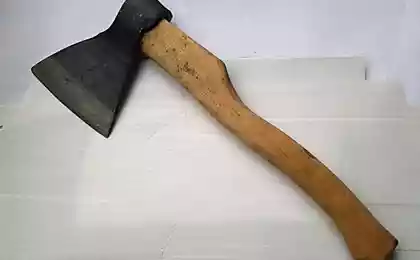849
Copper axe of ancient man, ötzi came to the Alps from Central Italy

In 1991 in the Ötztal Alps (Tyrol, Austria) was found frozen in the ice mummy of a man of the Chalcolithic. The remains found at an altitude of 3200 meters. Anthropologists found out that the mummy is around 5300 years. At the current moment is the oldest human mummy discovered in Europe.
In 2011, geneticists have managed to sequence the full genome of ötzi. After that, the researchers conducted a comparative analysis of DNA of approximately 4 thousand people from the Tyrol region in Austria. It turned out that 19 people — distant relatives of ötzi. Near ötzi lay a well-preserved copper ax. Now experts have found that the copper axe that was produced in one of the Central areas of Italy and not the local fields.
Except ax, ötzi was stone tools, including Mousterian arrowheads, a flint scraper and a knife. Historians say that if each of these items would have been found near the mummy separately, ötzi could be attributed to the Paleolithic, Mesolithic, Neolithic and copper age. For the first time, scientists are faced with such a variety of tools from different eras in one person.

Copper axe represents the greatest interest for scientists. Its handle is made of yew wood, the axe blade for 99.7% of the copper. Previously it was thought that the copper that is local, from West or East Tyrol. Now scientists have conducted a thorough isotope analysis of the composition of the copper axe. The isotopic composition of different materials allows you to accurately establish their origins. The results of the analysis suggests that copper for the axe not the local. It was produced in one of the fields of southern Tuscany, Italy.
The scientists who conducted the study the tools ötzi was very surprised with the results of isotopic analysis. "We were not prepared for this news. Now, we plan to conduct further study of the axe, to confirm the results," said Angelica Fleckinger [Angelika Fleckinger]. If initial results are confirmed, then of historians added — you will need to understand how ötzi got the copper from Tuscany. Perhaps this man was a merchant? Whether there was commodity exchange between remote regions is a common practice for that time? How extensive was trade relations among the population of different regions 5000 years ago?

Source: South Tyrol Museum of Archaeology
Another issue that must be addressed is the involvement of ETSI in the process of copper mining. The fact that the hair of the mummy is much less lead than the modern man, and arsenic, on the contrary, more. Perhaps ötzi lived in areas of copper mining and processing arsenic bronze. It may well be that he was involved in the process of mining and processing of copper, although it remains to be proved.
However, the results of another analysis conducted several years later, different from the original. Geochemist Wolfgang Mueller [Wolfgang Müller] from the University of London conducted a series of analyses of samples of hair, skin, nails ötzi. He indicates that the arsenic content in nails of ötzi truly above the norm. But the analysis of other samples showed higher levels of heavy metals.
Imaging conducted by experts from the hospital of Bolzano, showed calcification of the walls of the aorta, the ECR. It is now known that at the time of death this man had a broken nose and ribs, and frostbitten toe, a damaged spine and right arm. The specialists found and qualificatio vessels of the legs the ECR. Genetic analysis showed that ötzi was vulnerable to cardiovascular diseases.
Sounded like the voice of ötzi?
Recently in the Italian city of Bolzan the conference, which was devoted to ancient man. Her Italian experts from Britanskogo main hospital presented the results of the work to restore the voice of ETSI. According to them, the measurement of the length of the vocal tract and the vocal cords allows us to reconstruct the voice of a man who lived over 5,000 years ago with a high degree of accuracy.
Ötzi the larynx were investigated by computed tomography. To analyze the vocal apparatus of the mummy was difficult because her hand was right on the throat, and the hyoid bone was dislocated and partially destroyed. But the Italians have coped with this task.
Why did ötzi die?
Scientists believe that ancient man was murdered. A number of facts suggests that shortly before his death ötzi he was in some kind of fight. This is evidenced by the traces of blood of other people and some injuries. Until recently it was believed that ötzi fought in the mountains for several days, after which he was killed. But now it was discovered that for two and a half hours before death, the ancient man ate a lot of meat of Alpine ibex. According to scientists, hardly anyone would take a rich foods during the contractions or during breaks in combat. Most likely ötzi someone fought for several days before death. Then he was overtaken by the enemy, who killed ötzi from the bow from the back, dropping the arrow from a great distance.
Source: geektimes.ru/post/280818/























